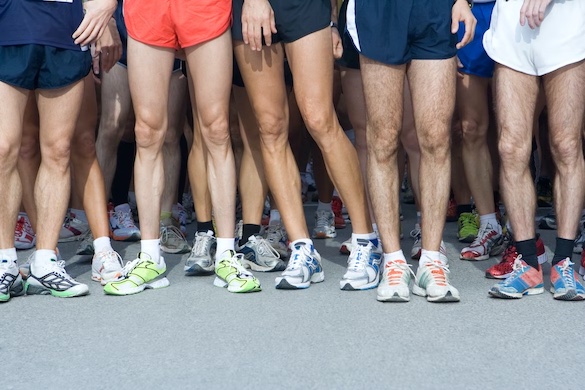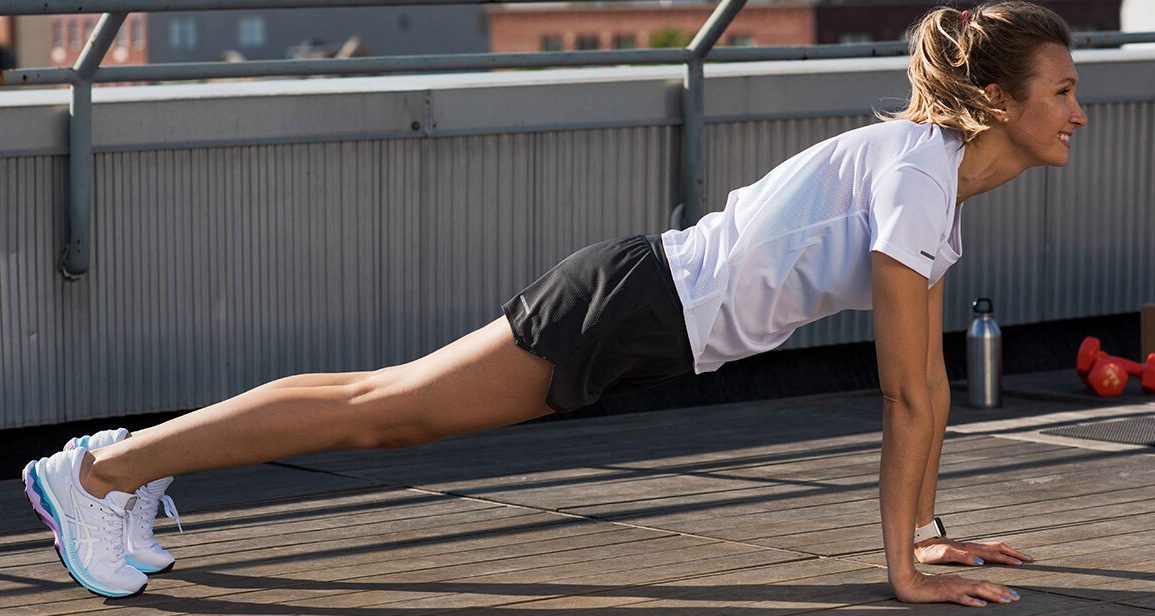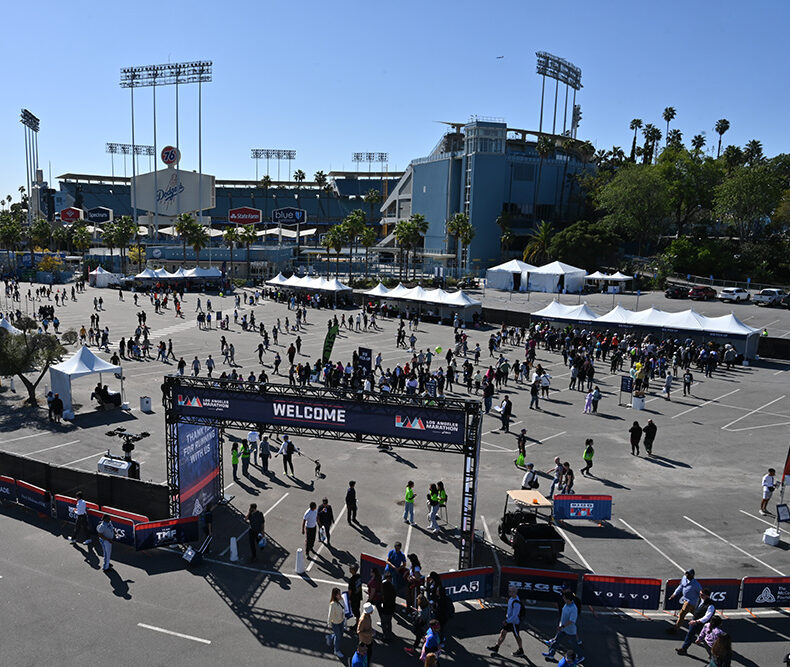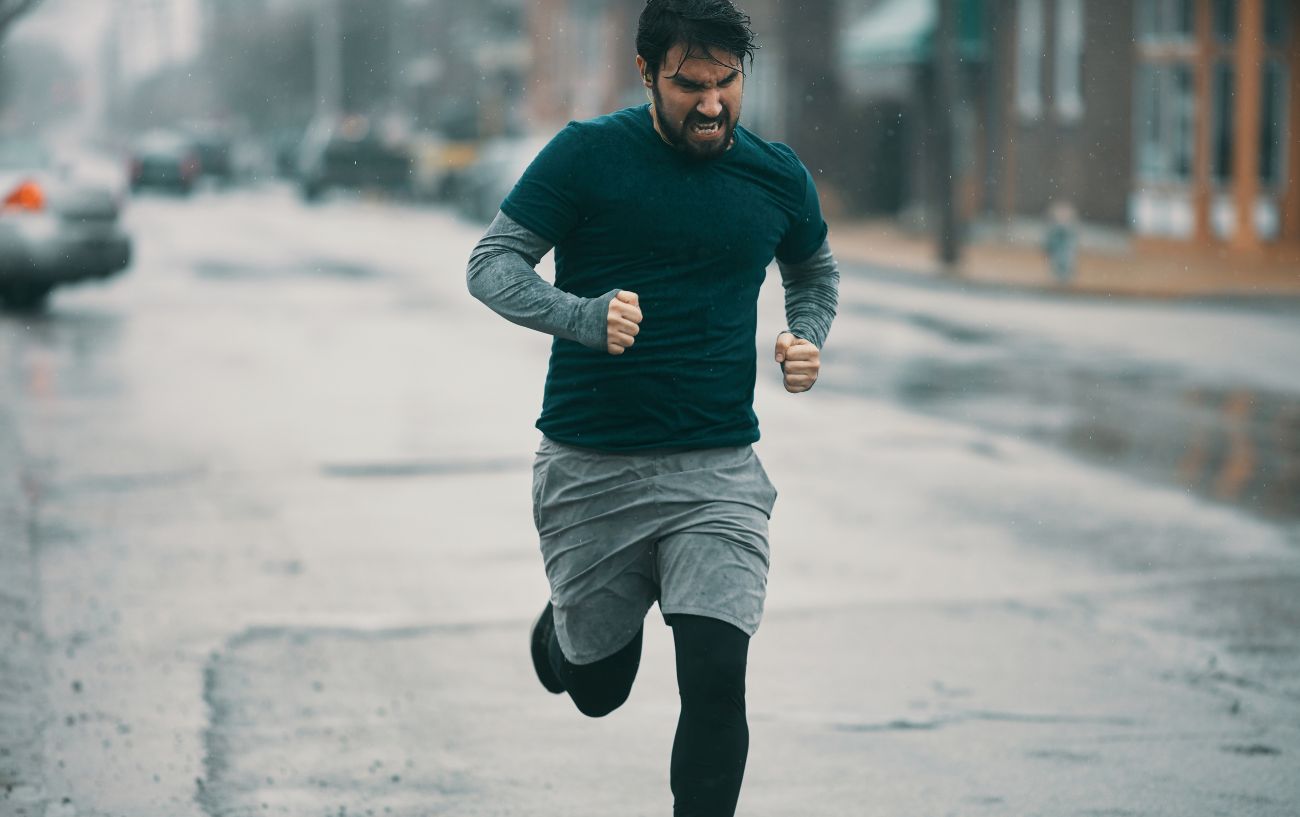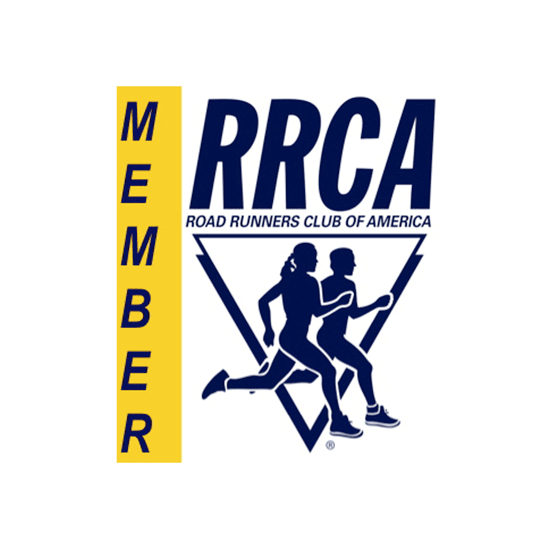As we get into longer mileage during marathon training, making sure you have the right shoes is important. If this is your first time buying running shoes for long distance training, this article is for you.
Top Ten Tips for getting a Proper Fit When Buying Shoes
- Buy shoes that are 1/2 to 1 size larger than normal “civilian shoes.”
- Watch for heel slippage while walking or running in the shoe.
- Toe box area should have plenty of room for your toes to spread both lengthwise and widthwise. Your foot spreads out during stride.
- A rule of thumb is when standing with all your weight in the new shoes, you should have a full thumb’s width between the end of your toes and the front end of the shoe.
- While wearing the shoes, notice how the midsole inside the shoe feels. Check for any discomfort in the arch support area and any irregularities that may exist in the shoe. (A small bump after 20 miles can feel like a giant rock!)
- Pay attention to uncomfortable folds on the top of the shoe and in the toe area.
- If you wear orthotics or some type of arch support, make sure you bring them when trying on shoes. You may need to remove the inserts in the shoes to get everything to fit the best.
- Don’t forget to bring the socks you plan to wear as well because thick socks will fit differently than thin socks.
- Plan to shop for shoes in the late afternoon since your feet are at their biggest towards the end of a day. As a rule, don’t go from a long run or walk directly to a running shoe store. Instead, wait a few hours and then go buy your shoes.
- To discern the differences between two different shoe types, brands, or models, try on one shoe on one foot and a different shoe on the other. It is not unusual to have one foot bigger than the other, so always make sure you test the shoes on both feet.
Finally, remember that during a marathon, you will be taking at least 50,000 steps. Select shoes that will provide comfort and support for each step.
What Type of Running Shoes Should I Get?
There are four main types of running shoes: Minimal, Cushion, Stability, and Motion Control. Unless you have been running/walking for a few years, you may not know which type is best suited for your type of foot mechanics and the type of racing you are planning to do. Shoes that were fine for a 5K, may not work for a marathon. And although this goes in the face of “Facebook facts,” there is no study that shows scientific proof that either cushioned or minimal shoes lessen the chance of injury.
Where Should I Shop for Running Shoes?
Buy your shoes at a running shoe store. For those who have never bought running shoes before, ask the salesperson to analyze your running form to determine your foot type and suggest the correct shoe. In general, stay away from discount stores or sporting goods stores since their sales people lack knowledge of our sport and there is often a very limited selection. However, once you know which shoes you like and work well for you, then you can feel free to buy them wherever you like.
When Should I Buy a New Pair of Shoes?
There is no simple answer to this very important question. Most shoes should last between 300 and 500 miles, but mileage is not the only consideration. Factors such as a person’s weight, running/walking mechanics, and primary surfaces used during training also play a role in determining when to get new shoes. One good way to decide when to get new shoes is to listen to your body. If your knees or joints seem stiffer or in more pain than normal, it is usually a good sign that your shoes are no longer performing at the same level. One suggestion for tracking your shoe mileage is to write the purchase date in your training log and then use your log to keep track of how many miles you put on your shoes from that date. When you get close to 300 miles, take a good look at your shoes to check the wear on the soles, heels, insoles, etc. Don’t wait until your shoes are completely worn down to get a new pair.
Also, since shoe styles change constantly, don’t just buy the same shoe because the models change from season to season. When you find a brand and style you like, it is a good idea to buy more than one pair of those shoes.
How Important are Shoe Laces?
How to lace your shoes for long distances requires some attention. A shoe that is laced too tightly will not allow your feet to swell properly and thus cause undue agony. Shoes can also be laced up differently to achieve a better fit. Different techniques, such as skipping holes or using the Butterfly lacing technique, may help you achieve the right fit. You may also want to lace sections of the shoe more tightly or loosely, such as tying the forefoot loosely while keeping the ankle tight to ensure a snug heel fit.
Can I Wear My New Shoes on Race Day?
It’s not a good idea to wear brand new shoes for long training or on race day. We recommend that you break in a pair of shoes on shorter training runs for a total distance of about 25-50 miles before you wear them on a long distance run or on race day.
And Finally, What is the “Best Shoe” for Me?
Studies cannot prove that one type of shoe is better than another. What studies have shown is that the best shoe is the one that helps activate muscle fibers needed for sustained movement, allows efficient use of oxygen, and offers the greatest perceived comfort. Based on those criteria, a shoe that fits well, is comfortable, and causes no discomfort or pain in an initial run or walk is the best for you.
Happy Running!
– Coach Barry
